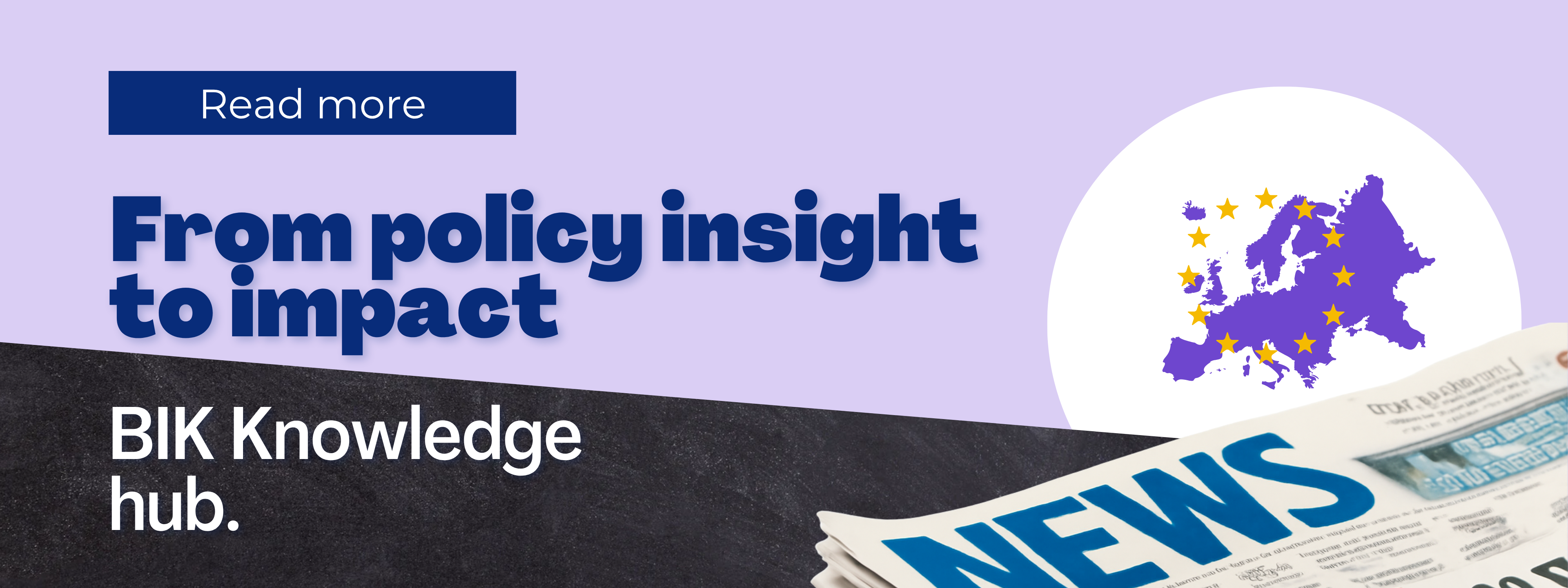The Better Internet for Kids (BIK) Policy monitor continues to serve as a key reference for understanding how European countries are shaping a safer and more empowering digital world for children and young people. Now in its sixth edition, the 2025 report builds on over a decade of comparative policy tracking, providing valuable insights into the national implementation of the European strategy for a Better Internet for Kids (BIK+), three years after its adoption.

The BIK+ strategy, adopted by the European Commission in May 2022, sets out a comprehensive vision to ensure that children and young people are protected, empowered, and respected online. The BIK Policy monitor 2025 reviews how this vision is being realised across the 27 EU Member States, Iceland, and Norway, assessing both approaches to policy making and on-the-ground actions. It highlights progress, gaps, and good practices under the strategy’s three pillars: safe digital experiences, digital empowerment, and active participation.
Building on progress, identifying challenges
The 2025 findings reflect a growing national commitment to protecting, empowering, and respecting children online. All participating countries report prioritising these issues in national strategies and legislation. Many countries show particularly strong engagement in digital empowerment, such as integrating online safety into education systems, promoting media literacy, and encouraging digital creativity among young people.
At the same time, the report identifies several areas where further progress is needed. These include establishing more integrated national policy frameworks, improving data collection and evidence-based approaches, enhancing governance and cross-sector coordination, and expanding youth participation in digital policymaking. Notably, while 28 of 29 countries consider BIK-related issues a policy priority, only a minority have comprehensive or centralised policy frameworks in place.
From protection to participation
Positive trends were found across all three pillars of the BIK+ strategy:
| Safe digital experiences: Many countries have introduced new or strengthened legislative measures, including protective actions under the Digital Services Act (DSA), age verification mechanisms, and national codes of practice. Safeguarding children's mental health and tackling harmful content remain top priorities. |
| Digital empowerment: Almost all countries now embed online safety into school curricula, supported by teacher training and informal learning initiatives. Artificial intelligence (AI) literacy and combating disinformation are growing priorities. |
| Active participation: Though youth involvement in policymaking remains limited, several countries are developing new structures to foster more meaningful child participation. Awareness of children's digital rights is rising, and more governments are working toward providing child-friendly policy documents. |
As countries advance the BIK+ vision, the 2025 Policy monitor highlights the need for balanced progress across all three pillars, calling for integrated strategies, stronger monitoring, and greater inclusion of children’s voices.
Curious for more? Explore the Knowledge hub!
The 2025 report and its accompanying country profiles, the interactive map-based data explorer and the at-a-glance index charts are available through the Better Internet for Kids Knowledge hub.
Read the full BIK Policy monitor report 2025 and stay updated on upcoming outputs by subscribing to the quarterly BIK bulletin.

The Better Internet for Kids (BIK) Policy monitor continues to serve as a key reference for understanding how European countries are shaping a safer and more empowering digital world for children and young people. Now in its sixth edition, the 2025 report builds on over a decade of comparative policy tracking, providing valuable insights into the national implementation of the European strategy for a Better Internet for Kids (BIK+), three years after its adoption.

The BIK+ strategy, adopted by the European Commission in May 2022, sets out a comprehensive vision to ensure that children and young people are protected, empowered, and respected online. The BIK Policy monitor 2025 reviews how this vision is being realised across the 27 EU Member States, Iceland, and Norway, assessing both approaches to policy making and on-the-ground actions. It highlights progress, gaps, and good practices under the strategy’s three pillars: safe digital experiences, digital empowerment, and active participation.
Building on progress, identifying challenges
The 2025 findings reflect a growing national commitment to protecting, empowering, and respecting children online. All participating countries report prioritising these issues in national strategies and legislation. Many countries show particularly strong engagement in digital empowerment, such as integrating online safety into education systems, promoting media literacy, and encouraging digital creativity among young people.
At the same time, the report identifies several areas where further progress is needed. These include establishing more integrated national policy frameworks, improving data collection and evidence-based approaches, enhancing governance and cross-sector coordination, and expanding youth participation in digital policymaking. Notably, while 28 of 29 countries consider BIK-related issues a policy priority, only a minority have comprehensive or centralised policy frameworks in place.
From protection to participation
Positive trends were found across all three pillars of the BIK+ strategy:
| Safe digital experiences: Many countries have introduced new or strengthened legislative measures, including protective actions under the Digital Services Act (DSA), age verification mechanisms, and national codes of practice. Safeguarding children's mental health and tackling harmful content remain top priorities. |
| Digital empowerment: Almost all countries now embed online safety into school curricula, supported by teacher training and informal learning initiatives. Artificial intelligence (AI) literacy and combating disinformation are growing priorities. |
| Active participation: Though youth involvement in policymaking remains limited, several countries are developing new structures to foster more meaningful child participation. Awareness of children's digital rights is rising, and more governments are working toward providing child-friendly policy documents. |
As countries advance the BIK+ vision, the 2025 Policy monitor highlights the need for balanced progress across all three pillars, calling for integrated strategies, stronger monitoring, and greater inclusion of children’s voices.
Curious for more? Explore the Knowledge hub!
The 2025 report and its accompanying country profiles, the interactive map-based data explorer and the at-a-glance index charts are available through the Better Internet for Kids Knowledge hub.
Read the full BIK Policy monitor report 2025 and stay updated on upcoming outputs by subscribing to the quarterly BIK bulletin.

- BIK policy monitor BIK policy
Related content
- < Previous article
- Next article >









